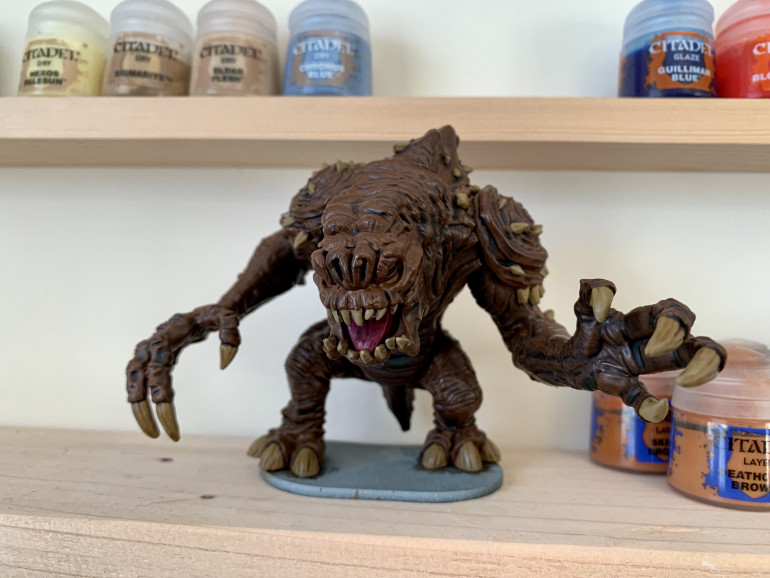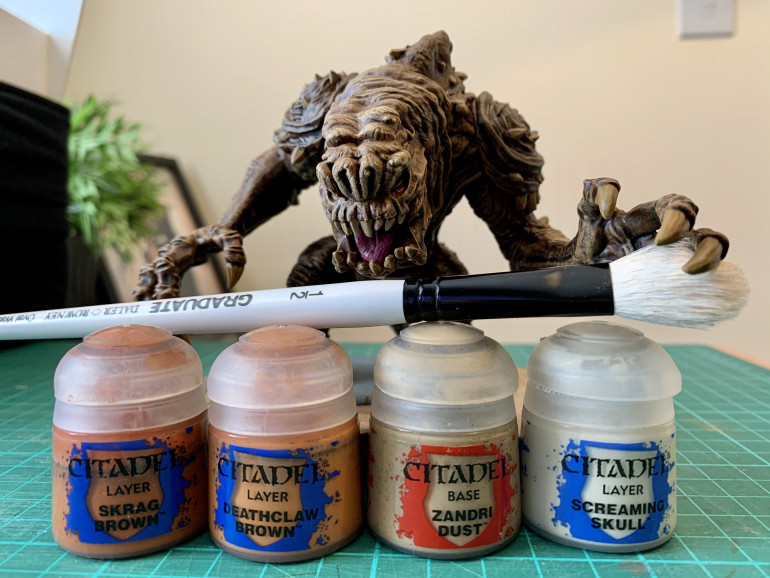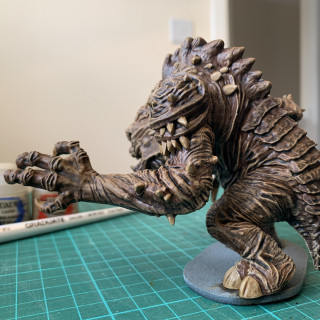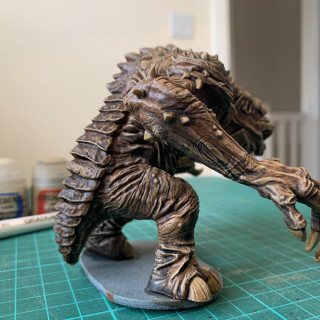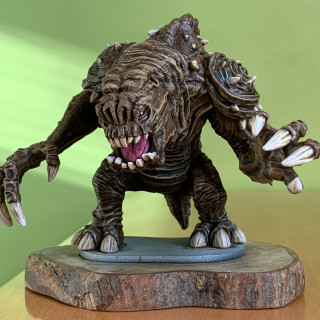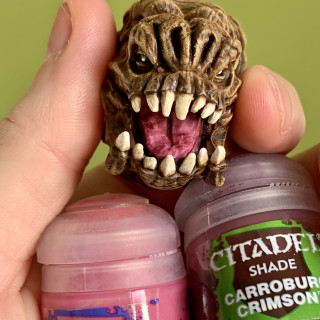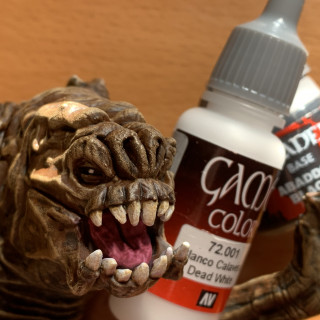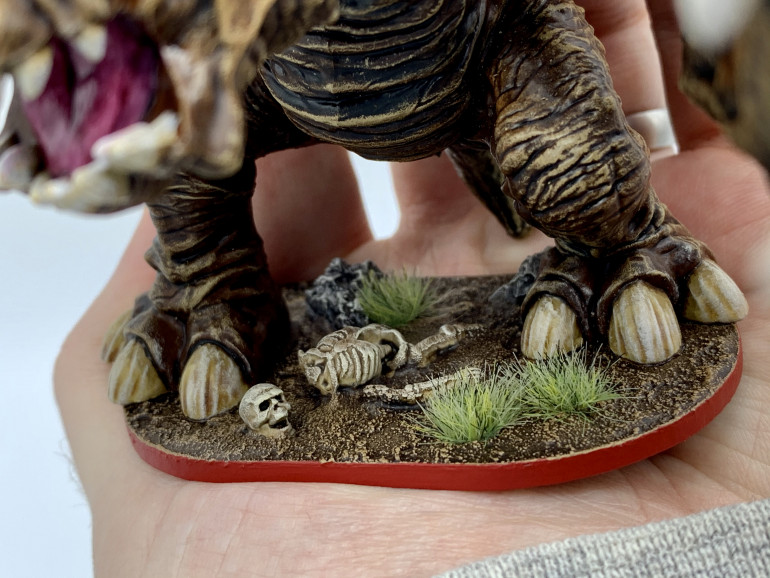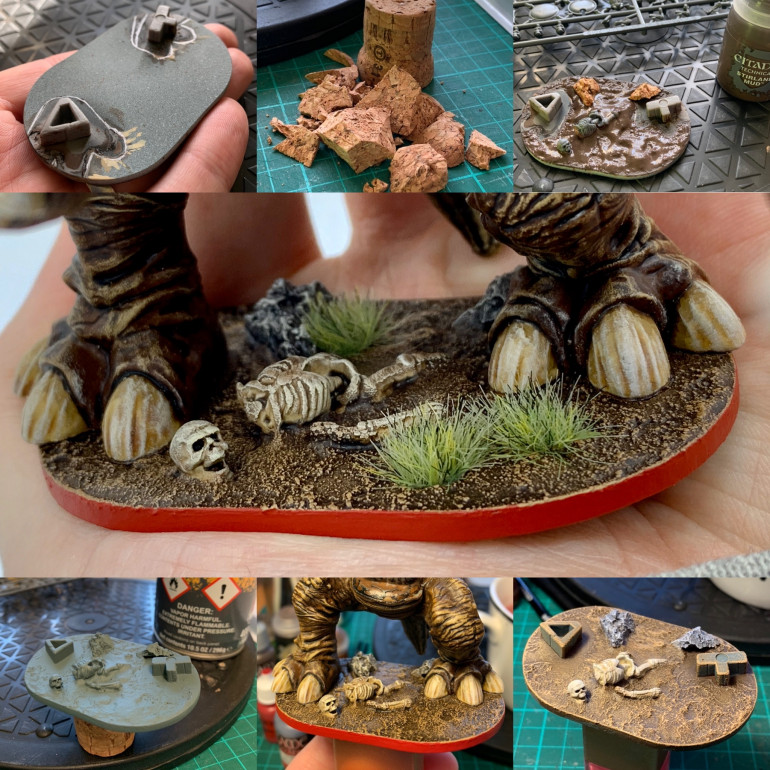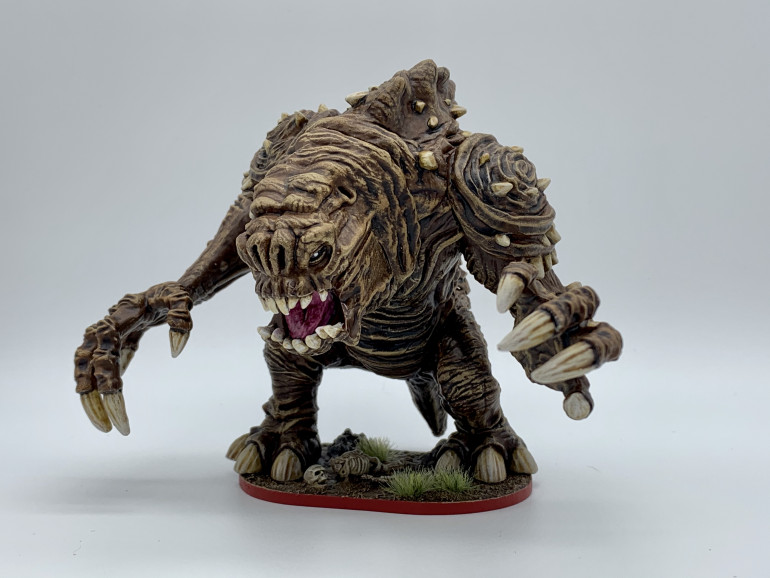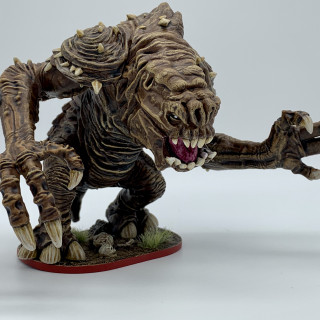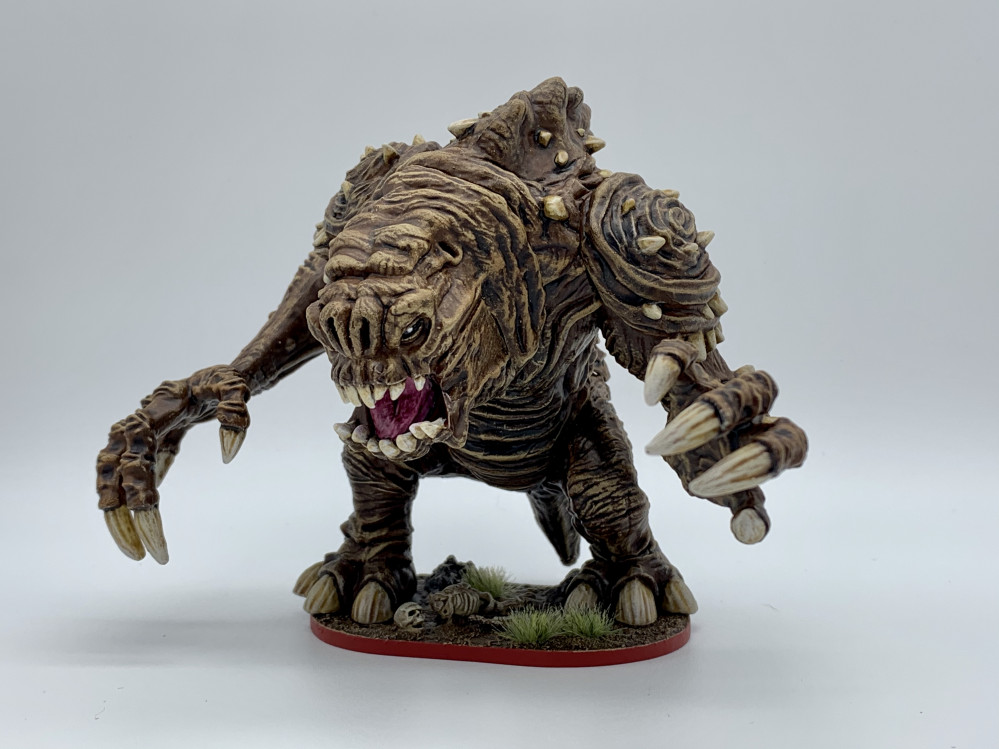
From Rancor, to Rancorsome!
Recommendations: 75
About the Project
I am going to paint my 'adorable' Rancor from Star Wars: Imperial Assault - Jabba's Realm expansion.
Related Game: Star Wars: Imperial Assault
Related Company: Fantasy Flight Games
Related Genre: Science Fiction
Related Contest: Star Wars Hobby Weekend
This Project is Completed
Background + The Plan
Background
I’ll set the scene; it’s Christmas 2018 and I open a suspiciously ‘boardgame shaped’ present (I had a good feeling about this). I must have been good that year because Santa had brought me the Jabba’s Realm expansion for Star Wars Imperial Assault, hurrah!
Those familiar with the Jabba’s Realm expansion will know what beastie lies within… the dreaded RANCOR!! As soon as I saw the Pug-faced monstrosity I immediately fell in love and couldn’t wait to paint it. The problem is however, that was 13 months ago and the brute still hasn’t been painted.
So, as soon as I heard about OnTableTop’s ‘Star Wars Hobby Challenge’, I knew this would be the PERFECT opportunity to break out my brushes and turn that Rancor’s frown upside-down (which is probably still a frown).
The Plan
1. Prime – (grey, then a white zenithal).
2. Basecoat – (skin = brown, tongue = pink, claws/teeth/toes/spines = beige/bone).
3. Wash – (complete coat of Agrax Earthshade).
4. Drybrush – (browns, beiges and bone).
5. Light Wash – (to create shadows and dull down some drybrushed areas).
6. Highlights – (claws, teeth, toes, tongue, spines etc).
7. Light Drybrush – (to make some key areas ‘pop’).
8. Basing – (my vision is a mud/swamp base with a skull + bones poking out).
9. Finishing Touches – (matt varnish > grass tufts > gloss varnish eyes + tongue).
P.S. In my excitement to get going, I’ve been impatient and already completed stages 1-3 (before posting this project), which is why I don’t have any photos of those stages.
Stage 4. Drybrush
The Drybrush stage is always a fun process, as it’s quite easy to get good-looking results in a short space of time. Due to the large size of the Rancor, I was able to try out a new brush I’d bought for just this task – a cheap brush I’d bought from the local Hobbycraft for around £1 or £2.
My strategy was to work my way from Skrag Brown up to Screaming Skull. As the colours get lighter, so does the amount of paint I’m using on the brush – the idea being to create a natural-looking tone of browns and beiges on the Rancor’s skin. I actually don’t mine the ‘chalky’ look here, as I think it makes the skin appear weathered and worn – a look I’m happy with (for now).
I opted to not drybrush the claws, spines, toes, and teeth just yet – as I’d like to use a ‘proper’ brush and control the gradient a little more. Fingers crossed that decision pays off!
Stage 5. Light Wash | Stage 6. Highlights | Stage 7. Light Drybrush
Stage 5. Light Wash
As I went around the model, I found that I didn’t really need too much of a wash to create shadows – I only ended using a little Agrax Earthshade here and there to dull down some drybrushing from the previous stage. I also deepened the darker areas under the arms and legs, although this was quite subtle and (if I’m being honest) not particularly noticeable.
Stage 6. Highlights + Selective Washes
Ah, the highlighting stage… when painters start seeing the little details ‘pop’ but also (certainly in my case) spend the most time on. Highlighting can be fiddly because you’re typically using a small brush on specific areas of the model – you really need to be careful, as one ‘slip of the wrist’ and you’ve got some tidying up to do!
Here I was highlighting the Rancor’s spikes, teeth, claws and toes. To do this I started with a thin coat of Ushabti Bone, then a light wash of Seraphim Sepia. When painting the highlight, I intentionally left a small amount of the original colour to attempt a sort of gradient effect – not perfect, but I’m happy with the results.
I also painted over the tongue during this stage, as I wasn’t happy with the original colour. To get the shade I wanted, I mixed Emperor’s Children with a some Dead White (Vallejo) to give me a light pink. Once dry, I washed the tongue using Carroburg Crimson – perfect!
Stage 7. Light Drybrush + Eyes
Once the wash was dry on the bone coloured areas, I drybrushed them using Terminatus Stone, followed by a lighter drybrush of Wrack White. Using Citadel’s ‘Dry’ range was a mixed bag – at first everything is fine, but (because drybrushing) you can’t really wash your brush, and the thicker ‘Dry’ paint ended up ‘clogging’ up my brush. Perhaps it was just me, but I’m happy with the results and will certainly be giving them another try in future.
At this stage, it was time… EYES!! I’m not usually an eye person (it scares me) but I really wanted to give it a go on the Rancor. Using my ‘Psycho’ brush from The Army Painter, I used Abaddon Black to re-darken the eye, then with my steadiest hand (and holding my breath) I put a small dot of Dead White (Vallejo) in the centre of each eye. I’m really glad I gave this a go because I think it gives an extra bit of character to a showpiece miniature.
Next up… basing!
Stage 8. Basing
Stage 8. Basing
Basing is relatively new to me; aside from a Tattooine cracked earth effect (Tusken Raiders) and Hoth snow (Wampas) – I usually just paint my bases ‘boring’ grey. The Rancor was a great opportunity to get a little creative.
My plan was to create a muddy ‘swamp-like’ base with skeletal remains, a couple of rocks and some grass tufts – something I was able to achieve!
I started by using a pencil to mark out where the Rancor’s feet sat on the base. Then I chopped up an old wine cork (to create some rocks) and clipped some skeleton pieces off a cheap sprue I’d bought for this exact purpose.
Using Citadel’s Stirland Mud, I put a good few ‘splodges’ all over the base, making sure to avoid the areas I’d previously marked out for the Rancor’s feet. I was then able to place the cork rocks and skeleton remains in the ‘mud’ and waited for it all to set.
Once completely dry, I gave the base a spray of Mechanicus Standard Grey and base coated the mud (Charred Brown – Vallejo), the rocks (German Grey – Vallejo) and the bones (Ushabti Bone). Next was a complete drybrush of Deathclaw Brown, followed by a light drybrush of Zandri Dust, and a final lighter drybrush of Screaming Skull.
The final steps were to give the whole thing a shade/wash using Agrax Earthshade, then (once dry) a very light drybrush of Screaming Skull, before finally gluing on some of The Army Painter’s swamp grass tufts.
I enjoyed the basing process and will certainly be doing this more often – as the final effect really sets off the miniature. Coming up tomorrow… finishing touches and the end of the project!
Stage 9. Finishing Touches | Project Complete!
Stage 9. Finishing Touches
Once the base was completed, there wasn’t really too much left to work on – all I needed to do was;
- Glue the jaw to the head.
- Glue the legs onto the base – I leave the other bits un-glued so that this ‘miniature’ can fit into my Imperial Assault box.
- Use thinned ‘Ardcoat and brush it onto the Rancor’s eyes, nostrils and maw – to provide a shiny gloss effect.
Once everything was dry, that was it… my Rancor is complete!
Final Words
I’d like to thank the wonderful OnTableTop team for running this hobby event – because if I hadn’t heard about it, my Rancor would likely still be on the shelf!
If you’ve enjoyed my work (or reading my updates) – I have a blog over at www.redrexgames.com where I document my board game design process, and you can also follow me on; Instagram redrexgames | Twitter @redrexgamesuk | Facebook @redrexgames.
*shameless plug over*
I’m really pleased with the final results and have absolutely loved documenting the process along the way – thanks again!!









































